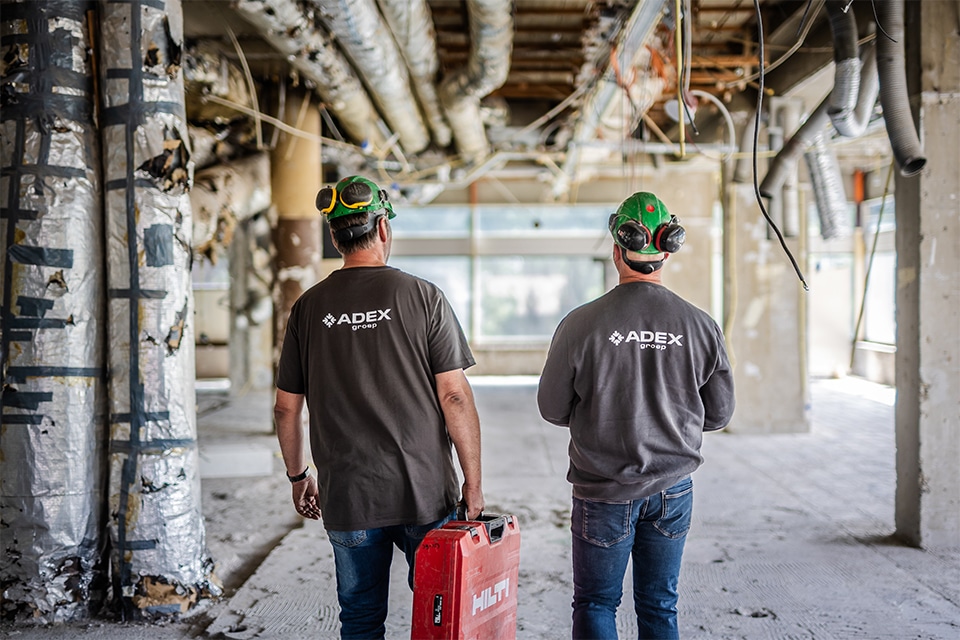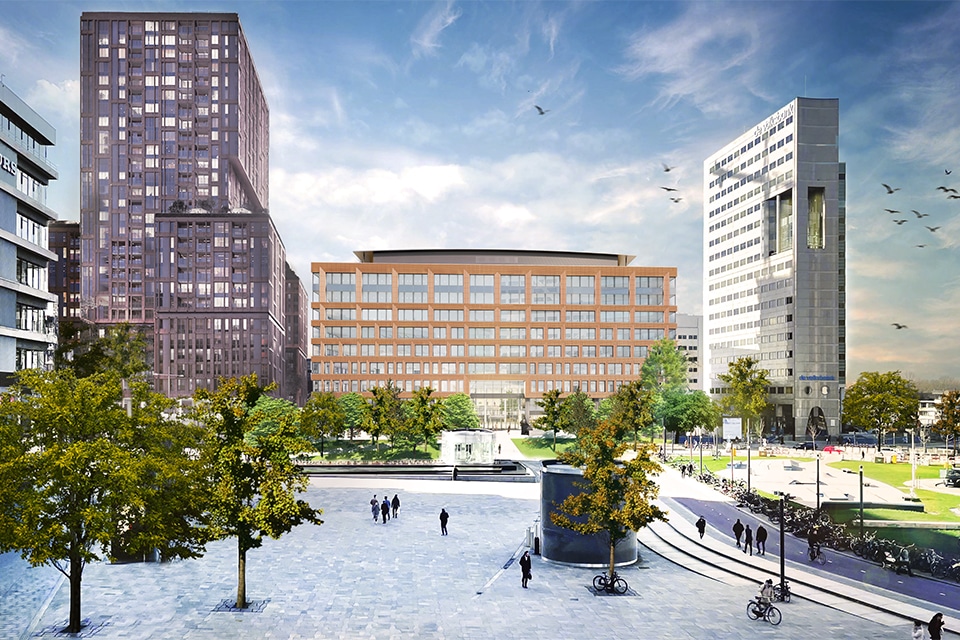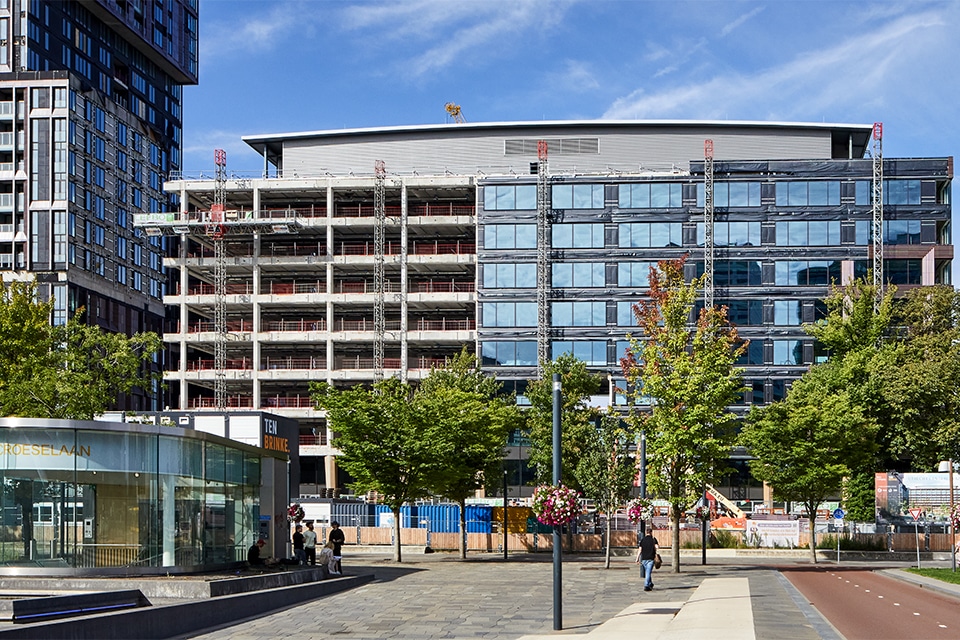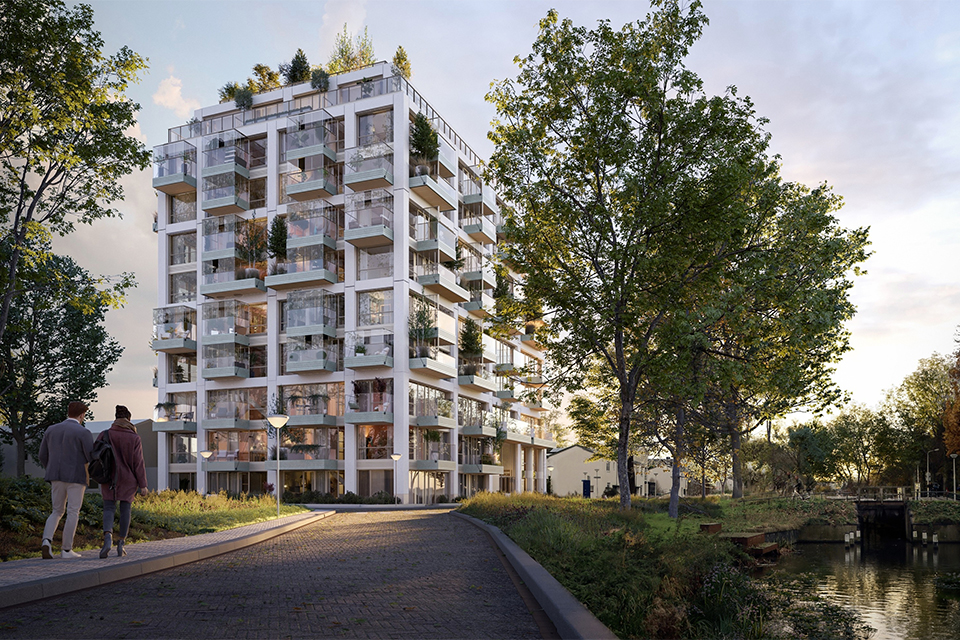
Durable from foundation to roof
The partially transparent barracks fit the firefighters like a glove. Moreover, from the circular concrete foundation to the green roof, the building is sustainably designed and built.
The new fire station is on Willem Dreeslaan in Papendrecht, a location that BMN De Klerk already knew well. "We built the barracks next to Papendrecht's new municipal yard," explains work planner Kees Sterrenburg of BMN De Klerk. "We also built that one for the municipality and delivered it at the end of January 2020. In the following spring, we were involved in the construction team for the fire station. We thought along with structural engineer Pelecon, RoosRos Architects and De Blaay-van den Bogaard Raadgevende Ingenieurs in the design and execution. We started construction at the end of August."
Sustainable
The municipality of Papendrecht and the architect wanted to build the new fire station as sustainably as possible. This was implemented in various ways. "That starts with the foundation beams," says Sterrenburg. "Those are made with 'freement'. This is a circular concrete mortar, made from recycled cement from concrete rubble, which contributes to lower CO2 emissions. The construction is also circular. It can be completely disassembled and reused at the end of the building's life." Other sustainable applications include solar panels, all-electric installations, charging stations for electric bicycles and cars, a green roof and a wadi.

Efficient and transparent
"In the design phase, attention was also paid to the wishes of the firefighters," continues Sterrenburg. "For them, efficient internal logistics were especially important. After all, in the event of a fire, they need to be able to turn out as quickly as possible. Another wish concerned the transparency of the building. A lot of glass was used inside, so that you can see through the entire building from almost every room. The north facade is also completely made of glass, so that the vehicles are in a shop window, so to speak."
Steel, sandwich panels and glass
With the driving of the first pile, construction of the fire station officially started on August 27, 2020. A week and a half later, BMN De Klerk laid the foundations. Sterrenburg: "We built the barracks with a steel structure and hollow-core slabs. Then we installed the steel roof plates and sandwich panels, followed by the facade frames and aesthetic cladding. In particular, the seamless coordination between the curtain walls and overhead doors was a major concern." In December, BMN De Klerk started the finishing and installation work. The building will be completed and occupied this spring.

Firefighters involved
Sterrenburg looks back on the project with great pleasure. "The good preparation paid off," he says. "Because we collaborated from different disciplines at an early stage, we were able to work out the design in detail. This prevented unpleasant surprises in the execution. Moreover, the collaboration was very pleasant, with short lines of communication and mutual understanding. What made this project extra fun was the involvement of the firefighters. They regularly visited the construction site and asked good, critical questions. We hope they will enjoy their new building for many years to come."
Construction Info
Client
Municipality of Papendrecht
Architect
RoosRos Architects, Oud-Beijerland
Contractor
BMN De Klerk, Hardinxveld-Giessendam
Project info
Circularity indicative of structural design
After the Papendrecht municipal yard, Pelecon was also involved in the new construction of the adjacent fire station. Commissioned by the municipality of Papendrecht, Pelecon provided the structural design, structural calculations and management.
"One of the main principles of the design was sustainability," explains Pelecon structural engineer/co-director Mack Stolwijk. "We thought along with the municipality and RoosRos Architects at an early stage to make the building as demountable as possible. The steel structure, from which the barracks is built, lends itself ideally to this. At the end of its useful life, the building can easily be taken apart and reused again."
Another sustainable solution from Pelecon's quiver is Freement. This is a high-quality, circular concrete mortar made from recycled cement. Worldwide application of Freement results in a CO2 reduction of no less than nine percent. Stolwijk: "We were once the first to apply Freement in the structural design of a building. We are very enthusiastic about it and often include this circular concrete type in our advice. Nice that the municipality of Papendrecht went along with this advice. Thus the design of the barracks not only makes a difference aesthetically, but also in terms of sustainability."
Project info
Thoughtfulness, flexibility and speed
The interior of the new fire station in Papendrecht owes its transparent character largely to the full-glass interior walls. Glass specialist Jensz engineered, delivered and installed these walls, including on-site measuring. The glass balustrade on the outside was also realized from A to Z by Jensz.
"On this project, it's all about thinking along, flexibility and speed," says Jensz director Martin Janszen. "For example, during the engineering phase, we thought along with the assembly of the balustrade. To meet the tight aesthetic image, we attached the structure under the roofing. Flexibility and speed were mainly required in the production and assembly of the glass walls. These had to be in the building just three weeks after measuring. Thanks to good preparation, our short lines of communication and good cooperation with contractor BMN de Klerk, we were able to meet this schedule. When the barracks are soon completed, we can look back together on a beautiful job and end result."



